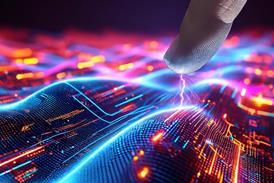“We are looking at production processes in cell and gene therapy that have so far mainly been done manually,” says Tim Jaarsma of IMI. “Together with companies that are active in this field, we analyze the risks that occur in the manual processes by which batches are lost and think about what kind of products we can develop to automate the actions.”

Tim Jaarsma talks about the development of products within the Growth Hub, an innovation platform of IMI in which solutions and/or new products are developed together with the customer based on problems from the market. IMI is an engineering company that focuses on industrial automation, transportation and life sciences. Jaarsma is involved in bioprocessing within the life sciences section.
“By talking to R&D persons from life science companies or via a questionnaire that can be filled in online on our website, we learn about the problems that people encounter”, says Jaarsma. “By collaborating with them on new developments, we help to bring products to the market faster.”
Mass flow controller
“For example, we have developed a miniaturized mass flow controller for bioreactors to dose the supply of gases. Comments from the market indicated that customers considered the existing mass flow controllers rather large and expensive. Since we produce special valves in our facility in Switzerland that are also used in other mass flow controllers, we already possessed the knowledge and facilities. On the inside of such a controller there is a proportionally switched valve that ultimately regulates the flow. It also contains a piece of electronics and a sensor. By connecting it to a bioreactor, various gases can be supplied. In order to be able to dose several gases at the same time, we have built a valve island on which several valves are located next to each other, each of which ensures the dosing of a different gas.”
Pinch valve
A pinch valve has also been developed on which a special io-link sensor has been built that provides a visual indication of the status (open/closed) of the valve. Pinch valves are used, for example, in downstream processing, where waste products are removed and buffers are supplied for ultrafiltration. Valves are needed to direct those fluids in a certain direction to supply something or control the pH. The valves only come into contact with the outside of the hoses through which the fluid flows. They are therefore both suitable for single use and multi use. However they are especially suitable for applications requiring a high level of hygiene control since a key feature of the valve is that it has no dead volume where fluid can get trapped.














